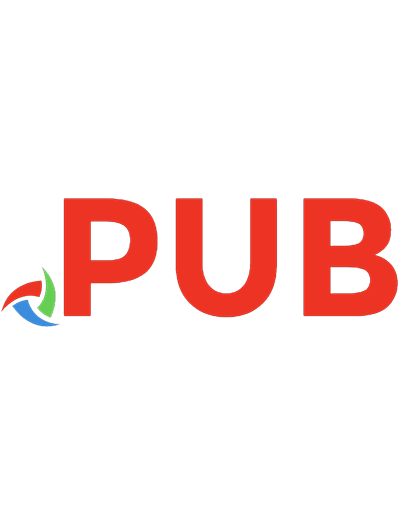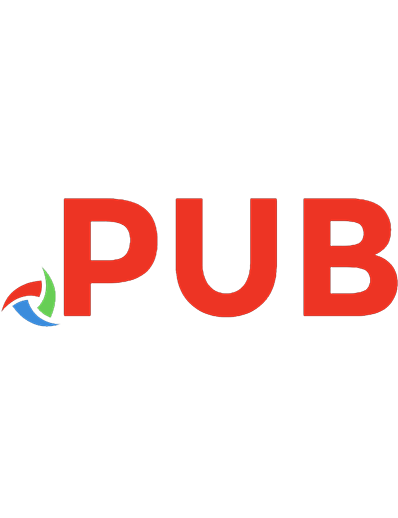Advances in Probiotics for Sustainable Food and Medicine 9811567948, 9789811567940
This book focuses on probiotics as sustainable foods and medicines, discussing issues such as screening and identificati
619 50 4MB
English Pages 240 [246] Year 2021
Table of contents :
Preface
Contents
About the Editors
Chapter 1: Probiotics and Their Potential Applications: An Introduction
1.1 Introduction
1.2 Classification: Probiotics, Prebiotics, Synbiotics and Postbiotics
1.2.1 Probiotic
1.2.1.1 Lactobacillus Species
1.2.1.2 Bifidobacterium Species
1.2.1.3 Bacillus Species
1.2.1.4 Saccharomyces Species
1.2.2 Prebiotic
1.2.2.1 Types of Prebiotics
1.2.2.2 Mechanisms of Action of Prebiotics
1.2.3 Synbiotic
1.2.4 Postbiotics
1.3 Colonization and Alterations of Gut Microflora
1.4 Immune System and Gastrointestinal Response to Probiotics
1.5 Potential Applications of Probiotics
1.5.1 Antimicrobial Activities of Probiotics
1.5.2 Anti-inflammatory Intestinal Activity of Probiotics
1.5.3 Anti-cancer Activity of Probiotics
1.5.4 Anti-allergic Activities of Probiotics
1.5.5 Anti-obesity Activity of Probiotics
1.5.6 Effect of Probiotics on Brain and Central Nervous System
1.6 Commercial Potential of Probiotics
1.6.1 Dairy Based Probiotic Products
1.6.2 Non-dairy Based Probiotic Products
1.6.2.1 Fruit Based Probiotic Products
1.6.2.2 Vegetable Based Probiotic Products
1.6.2.3 Cereal Based Probiotic Product
1.6.2.4 Soy Based Probiotic Products
1.6.2.5 Meat Based Probiotic Products
1.6.2.6 Herbal Probiotic Formulations
1.6.3 Pharmaceutical Probiotic Formations
1.7 Conclusions
References
Chapter 2: Sources and Selection Criteria of Probiotics
2.1 Introduction
2.2 Sources of Probiotics
2.3 Selection Criteria for the Probiotics
2.4 Conclusion
References
Chapter 3: Indigenous Fermented Foods as a Potential Source of Probiotic Foods
3.1 Introduction
3.2 Food Fermentation: Socio-Economic Importance
3.3 Probiotics: Concept and Health-Improving Properties
3.4 Probiotics: Global Perspective on the Usages
3.5 Probiotic: Application in Fermented Foods
3.6 Fermented Foods and Beverages
3.7 Fermented Foods: Nutritional and Health Benefits
3.7.1 Fermented Milk Products
3.7.2 Fermented Soy/Cereal Products
3.7.3 Fermented Fruits and Vegetables
3.7.4 Bio-Preservation
3.7.5 Shelf Life of Probiotics
3.8 Conclusions and Future Prospects
References
Chapter 4: Prebiotics for Probiotics
4.1 Introduction
4.2 Prebiotics (PreBs)
4.3 How PreBs Qualify as Functional Foods?
4.4 Types and Sources of PreBs
4.4.1 Lactulose
4.4.2 Lactosucrose
4.4.3 Inulin and Fructo-Oligosaccharide (FOS)
4.4.4 Galacto-Oligosaccharide (GOS)
4.4.5 Soybean-Oligosaccharide (SOS)
4.4.6 Xylo-Oligosaccharide (XOS)
4.4.7 Isomalto-Oligosaccharide (IOS)
4.4.8 Resistant Starch
4.5 Therapeutic Effects of PreBs
4.5.1 Enhancing the Gut Health
4.5.2 Immunological Effects
4.5.3 Reducing the Risk of Colon Cancer
4.5.4 Bioavailability and Mineral Absorption
4.5.5 Lipid Metabolism and Cardiovascular Diseases
4.5.6 PreBs and Skin
4.5.7 Reducing the Risk of Diabetes
4.6 Safety Concerns with PreBs
4.7 Synbiotics (SynBs)
4.8 Conclusions
4.9 Opinions
References
Chapter 5: Probiotics as Live Bio-therapeutics: Prospects and Perspectives
5.1 Introduction
5.2 Probiotics in Foodborne Diseases
5.3 Probiotics and Genetic/Neurodevelopmental Disorders
5.4 Probiotics for Management of Cardiovascular Diseases
5.5 Probiotics for Allergy and Autoimmune Disease
5.6 Probiotics for the Management of Obesity
5.7 Probiotics as Bio-therapeutics for NAFLD
5.8 Probiotic Intervention for the Management of Celiac Disease
5.9 Probiotic Intervention for the Management of Diabetes Mellitus
5.10 Conclusions
References
Chapter 6: Probiotics as Functional Foods
6.1 Introduction
6.2 LABs as Probiotics
6.3 Generalities of LAB
6.4 Genome of Lactic Acid Bacteria: Low Redundancy
6.5 Carbon Metabolism in LABs
6.6 Search for New Probiotics
6.7 Resistance of Probiotics to Food Processing: The Case of High Hydrostatic Pressures
6.8 Probiotics as a Functional Food
6.9 Metabolites Produced by Probiotics
6.9.1 Polysaccharides
6.9.2 Aromatic Compounds
6.9.3 Aromatic Compounds with Four Carbons
6.9.4 Antimicrobial Compounds
6.9.5 Bacteriocins
6.9.6 Hydrogen Peroxide (H2O2)
6.9.7 Diacetyl
6.9.8 Organic Acids
6.9.9 Lactic Acid
6.9.10 Acetic Acid
6.9.11 Proteolytic Capacity
6.10 Beneficial Effects of Probiotics
6.10.1 Immunology
6.10.2 Respiratory Infections
6.10.3 Diabetes
6.10.4 Cancer
6.11 The Role of Probiotics in Intestinal Diseases
6.11.1 Diseases Associated with Imbalances of the Intestinal Microbiota
6.11.2 The Role of Probiotics in Colon Cancer
6.12 Conclusion
References
Chapter 7: Probiotics in Livestock and Poultry Nutrition and Health
7.1 Introduction
7.2 Probiotic Microorganisms
7.3 Effect on Disease Incidence
7.4 Effect on Immunity
7.5 Probiotics to Improve Ruminal Functions
7.5.1 Effects on pH and Microorganisms in the Rumen
7.5.2 Methane Production
7.6 Effect on Performance Indicators
7.6.1 Non-ruminants
7.6.2 Ruminants
7.6.2.1 Feed Intake and Digestion
7.6.2.2 Milk Yield and Composition
7.7 Faecal Shedding of Gut Pathogens
7.8 Probiotics in Pre-ruminant Nutrition
7.9 Effect on Oxidative Stress
7.10 Effect on Meat Quality
7.11 Other Beneficial Effects of Probiotics
7.12 Conclusion and Practical Considerations in Probiotic Supplementation
References
Chapter 8: Probiotics for Human Health
8.1 Introduction
8.2 History of Probiotics
8.3 Probiotic Microorganisms
8.4 Mechanism of Probiotic Action
8.4.1 Competition with Pathogens
8.4.2 Production of Metabolites
8.4.3 Immunomodulatory Effects
8.4.4 Removal of Contaminants/Heavy Metals
8.4.5 Metabolism of Xenobiotics and Drugs
8.4.6 Bile Acid Metabolism
8.5 Effects on Health
8.5.1 Hypertension
8.5.2 Urogenital Infections
8.5.3 Lactose Intolerance
8.5.4 Cholesterol Removal
8.5.5 Cancer
8.5.6 Irritable Bowel Syndrome (IBS)
8.5.7 Allergy
8.5.8 Antibiotic Associated Diarrhea
8.5.9 Inflammatory Bowel Diseases (IBD)
8.5.10 Antioxidant Effects
8.6 Probiotics in Oral Health
8.7 Probiotics and the Immune System
8.8 Anti-obesity Activities of Probiotics
8.9 Probiotic Products with Claimed Health Benefits
8.10 Conclusion
References
Chapter 9: Influence of Probiotics Over AMPK-Dependent Health Activity: A Look into Its Molecular Mechanisms
9.1 Introduction
9.2 Probiotics, AMPK, and Metabolism
9.2.1 A Look into the Molecular Mechanism
9.3 Probiotics, AMPK, and Telomere Length
9.4 Conclusion
References
Chapter 10: Metabolic Engineering Approaches for Improvement of Probiotics Functionality
10.1 Introduction
10.2 Probiotics: Current Perspectives
10.3 Genetically Modified Organisms: A View Point
10.4 Recombinant Probiotics
10.5 Recombinant Lactic Acid Bacteria
10.5.1 Plasmid Vectors
10.5.2 Chromosomal Modification Systems
10.5.3 Expression Systems
10.6 Metabolically Engineered Lactic Acid Bacteria
10.7 Metabolically Engineered Probiotics
10.8 Designer Probiotics: Therapeutic Applications
10.9 Conclusions and Future Prospects
References

![Advances in Probiotics for Sustainable Food and Medicine [1st ed.]
9789811567940, 9789811567957](https://dokumen.pub/img/200x200/advances-in-probiotics-for-sustainable-food-and-medicine-1st-ed-9789811567940-9789811567957.jpg)
![Advances in Probiotics: Microorganisms in Food and Health [1 ed.]
0128229098, 9780128229095](https://dokumen.pub/img/200x200/advances-in-probiotics-microorganisms-in-food-and-health-1nbsped-0128229098-9780128229095.jpg)
![Advances in Probiotics: Microorganisms in Food and Health [1 ed.]
0128229098, 9780128229095](https://dokumen.pub/img/200x200/advances-in-probiotics-microorganisms-in-food-and-health-1nbsped-0128229098-9780128229095-x-6009510.jpg)






